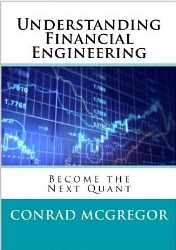Being an option seller is all about volatility arbitrage. If you sell options naked, then you hope that over time realized volatility is less than implied volatility. Realized volatility is the path that the underlying stock, index, commodity etc. took between the time that you sold the option and the time that the option expired. Implied volatility is the volatility that was implied by the option price at the time that you sold the option. If you perfectly delta hedge the option on a daily basis, then at maturity the difference between what you were paid when you sold the option and what you had left when the option expired is mostly attributable to the difference between implied volatility and realized volatility.
There are many individuals who consider option selling as “picking up nickels in front of a steamroller”. You collect a steady small profit most of the time, but every once in a while you get walloped by roaring realized volatility. That has been the big argument from academics such as Nassim Taleb in Black Swan or Fooled by Randomness. I will say that I agree, options are not always priced correctly, but later I will add some additional color. Back in 2007 and spring of 2008 the options market did not appreciate the volatility risk going into the fall of 2008 and it caused massive losses for those who were selling options and delta hedging. Below is the Merrill Lynch Equity Volatility Arbitrage Index which seeks to generate absolute returns by arbitraging the spread between S&P 500 market implied volatility and subsequent realized volatility.
So the volatility arbitrage index lost 85% between the end of August 2008 and November 20, 2008. That is a HUGE loss. One which most investors would not want to be in front of. On the other side of the equation let’s look at the S&P 500 over the same time period:
The S&P 500 lost about 53% between May 19, 2008 and March 9, 2009. A smaller loss over a much longer time period. Sometimes I would just prefer to take my lumps right away…and that leads me to the point of this article, that yes, volatility hits can be brutal when you stand stubbornly in front of the market but when times are decent volatility arbitrage can be a very rewarding game.
I will make the statement that *most of the time* implied volatility is overpriced. This means that there is more demand for options than there is supply. Where does this implied volatility demand come from? Mostly from institutional buyers. One set of natural buyers are pension funds, endowments, insurance companies and even high net-worth individuals who are afraid of downside risk. They might see some instability in the market and want to hedge their equity exposure while maintaining a long position so they go out and buy Put options on equities. Another (more recently emerged) huge player in the option buying arena are insurance companies. Life insurance companies have sold massive amounts of variable annuities and equity indexed annuities to individual policyholders that has left the insurance companies with massive unhedged short positions in long-dated puts or call options. The insurance companies generally do not want to hold that position so many go out into the market and buy options from investment banks to cover potential losses.
Now let’s look at the opposite side of this market…who is a natural seller of options? Market makers and investment banks? Maybe hedge funds provide a decent market and I know that even Warren Buffett was a seller back in 2007 before he decided that it was a bad idea… My general argument is that there are not enough natural sellers of options to absorb the natural demand and for that reason there is an excess risk premium for selling options over time.
So if that is the case, then shouldn’t everyone be selling options? A simple answer would be yes, but then the risk premium would go away. I believe that the potential loss of 85% or losses of 500% or more on naked positions has deterred many investors from pursuing this strategy. Options have leverage and they are fairly complicated. Options can be over priced or under priced and there are hundreds of different markets to choose from which makes the choice all the more difficult.
Let us go back to the volatility arbitrage index. The index fell from its lofty 1169 to a low that took it back to November 1998. From March 1989 to its peak in August 2008, the index had climbed over 1,000%. Now let’s turn to the S&P 500: from its peak in October 2007 the index fell to a level not seen since November 1996. In addition, the S&P had climbed just over 425% from 1989 with a tremendous amount more volatility.
Given the two paths, I would choose volatility arbitrage over straight long equities if I were to relive the 20 year period between 1989 and 2009. We can only speculate what the future will hold, but my money is still on volatility. I think this last volatility spike has taken out a lot of volatility sellers and it might be better now than it ever has been. The key is to know when the tide is turning, don’t be the last guy trying to get the last nickel in front of the steamroller. There will always be a market tomorrow.



